 Everyone, at some point, has run away from something difficult. It’s perfectly normal to want to run away when things get harder for you. It can feel overwhelming and impossible, like climbing over a mountain. But sometimes, to move forward, we have to figure out how to get through those difficult times. You certainly don’t have to do it alone. Find a support group that’ll be able to provide comfort, support, and strength for you. Some people can walk with you through this difficult time and help you to safely reach the other side of the mountain. Number four is exercise. Even though physical exercise is mostly for your physical benefit, it has mental benefits too. Physical exercise helps
you establish discipline. The discipline of the mind is necessary for developing your mental toughness because that helps you build consistency. When you’re steadfastly committed to building up your mental fortitude, negativity has a harder
time tripping you up. Regular exercise gives you a sense of routine, and consistency, and the added benefit of providing a healthy outlet for
your emotions and stress. Number five, learn how to lose gracefully. Despite how unpleasant it might be, failure can be the ultimate teacher. When you’re dealing with failure, sometimes the resulting anxiety and stress can weigh you down. This keeps you from
learning from your mistakes, whatever the lesson might be. Take the time to sit with your thoughts and work through the feelings
that you’re experiencing. Ask yourself, “What is the lesson here “and how do I move forward?” Once you’re able to take
accountability for yourself, it’s easier to move forward and not make those same
mistakes a second time. Number six, practice gratitude, even when you’re going
through a difficult season. Does it feel hard to be grateful, especially when you’re going through a difficult season in life? Sometimes it can be easier to focus on the negative
things around you. Practicing gratitude increases your overall
happiness, reduces depression, and helps you override
negative thought patterns. When you focus on what to be thankful for, you’ll find happiness and lightness take hold within your heart. Being grateful and having an open heart helps you to focus on
your goals and dreams so you can go forth and achieve them. And number seven, let go of
things you cannot control. Do you find it hard to let things go? Do you always want to fix everything and feel like you’re the
only one who can do it? It is tempting to want to
control everything yourself, especially when things
start going downhill. But, eventually, something has to give. When things go wrong, ask yourself, “Is this something I can solve? “And if so, how?” What is your role in the
process of achieving a solution? Learning to let go of things that are out of your control will make you feel less stressed and help you have a clear mind. How do you feel about these secrets that we’ve just shared? It’s not a secret anymore. What are some other ways that you like to build your mental fortitude? Let us know in the comments below. Please like and share this
video if it helped you, and you think it could
help someone else too. The studies and references used are listed in the description below. Don’t forget to hit the subscribe button for more Psych2Go videos. And thank you for watching, we’ll see you next time.As found on YouTubeꜱʟɪᴍᴄʀʏꜱᴛᴀʟ The World’s Only Slimming Crystal Water Bottles! The unique combination of crystals is so powerful that it has been used for decades by crystal healing experts to help thousands of men and women change their lives for the better ➯➱ ➫ ➪➬ ᴛʏᴘᴇ ᴏʀ ᴘᴀꜱᴛᴇ ʏᴏᴜʀ ᴄᴏɴᴛᴇɴᴛ ʜᴇʀᴇ [Official] ᵘᵖᵗᵒ ⁷⁰% ᵒᶠᶠ ᵗᵒᵈᵃʸ!
Everyone, at some point, has run away from something difficult. It’s perfectly normal to want to run away when things get harder for you. It can feel overwhelming and impossible, like climbing over a mountain. But sometimes, to move forward, we have to figure out how to get through those difficult times. You certainly don’t have to do it alone. Find a support group that’ll be able to provide comfort, support, and strength for you. Some people can walk with you through this difficult time and help you to safely reach the other side of the mountain. Number four is exercise. Even though physical exercise is mostly for your physical benefit, it has mental benefits too. Physical exercise helps
you establish discipline. The discipline of the mind is necessary for developing your mental toughness because that helps you build consistency. When you’re steadfastly committed to building up your mental fortitude, negativity has a harder
time tripping you up. Regular exercise gives you a sense of routine, and consistency, and the added benefit of providing a healthy outlet for
your emotions and stress. Number five, learn how to lose gracefully. Despite how unpleasant it might be, failure can be the ultimate teacher. When you’re dealing with failure, sometimes the resulting anxiety and stress can weigh you down. This keeps you from
learning from your mistakes, whatever the lesson might be. Take the time to sit with your thoughts and work through the feelings
that you’re experiencing. Ask yourself, “What is the lesson here “and how do I move forward?” Once you’re able to take
accountability for yourself, it’s easier to move forward and not make those same
mistakes a second time. Number six, practice gratitude, even when you’re going
through a difficult season. Does it feel hard to be grateful, especially when you’re going through a difficult season in life? Sometimes it can be easier to focus on the negative
things around you. Practicing gratitude increases your overall
happiness, reduces depression, and helps you override
negative thought patterns. When you focus on what to be thankful for, you’ll find happiness and lightness take hold within your heart. Being grateful and having an open heart helps you to focus on
your goals and dreams so you can go forth and achieve them. And number seven, let go of
things you cannot control. Do you find it hard to let things go? Do you always want to fix everything and feel like you’re the
only one who can do it? It is tempting to want to
control everything yourself, especially when things
start going downhill. But, eventually, something has to give. When things go wrong, ask yourself, “Is this something I can solve? “And if so, how?” What is your role in the
process of achieving a solution? Learning to let go of things that are out of your control will make you feel less stressed and help you have a clear mind. How do you feel about these secrets that we’ve just shared? It’s not a secret anymore. What are some other ways that you like to build your mental fortitude? Let us know in the comments below. Please like and share this
video if it helped you, and you think it could
help someone else too. The studies and references used are listed in the description below. Don’t forget to hit the subscribe button for more Psych2Go videos. And thank you for watching, we’ll see you next time.As found on YouTubeꜱʟɪᴍᴄʀʏꜱᴛᴀʟ The World’s Only Slimming Crystal Water Bottles! The unique combination of crystals is so powerful that it has been used for decades by crystal healing experts to help thousands of men and women change their lives for the better ➯➱ ➫ ➪➬ ᴛʏᴘᴇ ᴏʀ ᴘᴀꜱᴛᴇ ʏᴏᴜʀ ᴄᴏɴᴛᴇɴᴛ ʜᴇʀᴇ [Official] ᵘᵖᵗᵒ ⁷⁰% ᵒᶠᶠ ᵗᵒᵈᵃʸ!7 Secrets To Becoming Mentally Tougher
(bright music) – [Amanda] What does it
mean to be mentally tough? Think of it this way. You work out and exercise to gain physical strength, and the discipline and time you invest in your physical health help you to feel better overall. This same idea can be
applied to mental toughness. When you have a tougher mentality, you’ll mentally and emotionally
feel better overall. You can cope better with stressful and overwhelming seasons in your life. You’re more capable of
handling fear and doubt because you have the mental fortitude to deal with them. Want to learn how to
become mentally tougher? We’re gonna let you in
on some secrets to do so. Number one, get an emotional trashcan. Are you where you want to be in life? Do you feel stuck in
negative thought patterns? Negative thoughts are often what bar you from where you want to be. Negative thoughts can fill
you with dread and anxiety, and wind up emotionally harming you. Mental strength is hard to develop when you have a negative mindset. One solution to this would be to get an emotional trashcan. The point of having this trashcan is so that you can throw away your doubts, worries, and fears to gain better respite and mental clarity. You could try journaling, find a creative
outlet for your emotions, or reach out to a therapist. Trashing those bad thoughts and healthily dealing with them gives you a chance to process them, and get to a resolution. With a clearer and more positive mindset, it will be easier for you to focus on what you want and where you want to be. Number two, acknowledge and
use the power of choice. Do you sometimes feel pressured to make the right choice? Are you worried about disappointing others or letting other people down if you make the wrong choice? Let me let you in on a secret, there is no such thing as the right choice. Honest choices and in tune with what you
want or need at that moment are considered to be the
right choice for you. The right choice is dependent on where you want to go and how you want to get there. If you find yourself feeling
uncertain or unclear, make a list of your present goals. Figure out what you’re
willing to let go of, especially if you know
that it doesn’t serve you. And what you’re grateful for and what you truly want to focus on. Number three, do the
difficult things first. Life gets messy and sticky, and sometimes we can find ourselves in some pretty bad situations.  Everyone, at some point, has run away from something difficult. It’s perfectly normal to want to run away when things get harder for you. It can feel overwhelming and impossible, like climbing over a mountain. But sometimes, to move forward, we have to figure out how to get through those difficult times. You certainly don’t have to do it alone. Find a support group that’ll be able to provide comfort, support, and strength for you. Some people can walk with you through this difficult time and help you to safely reach the other side of the mountain. Number four is exercise. Even though physical exercise is mostly for your physical benefit, it has mental benefits too. Physical exercise helps
you establish discipline. The discipline of the mind is necessary for developing your mental toughness because that helps you build consistency. When you’re steadfastly committed to building up your mental fortitude, negativity has a harder
time tripping you up. Regular exercise gives you a sense of routine, and consistency, and the added benefit of providing a healthy outlet for
your emotions and stress. Number five, learn how to lose gracefully. Despite how unpleasant it might be, failure can be the ultimate teacher. When you’re dealing with failure, sometimes the resulting anxiety and stress can weigh you down. This keeps you from
learning from your mistakes, whatever the lesson might be. Take the time to sit with your thoughts and work through the feelings
that you’re experiencing. Ask yourself, “What is the lesson here “and how do I move forward?” Once you’re able to take
accountability for yourself, it’s easier to move forward and not make those same
mistakes a second time. Number six, practice gratitude, even when you’re going
through a difficult season. Does it feel hard to be grateful, especially when you’re going through a difficult season in life? Sometimes it can be easier to focus on the negative
things around you. Practicing gratitude increases your overall
happiness, reduces depression, and helps you override
negative thought patterns. When you focus on what to be thankful for, you’ll find happiness and lightness take hold within your heart. Being grateful and having an open heart helps you to focus on
your goals and dreams so you can go forth and achieve them. And number seven, let go of
things you cannot control. Do you find it hard to let things go? Do you always want to fix everything and feel like you’re the
only one who can do it? It is tempting to want to
control everything yourself, especially when things
start going downhill. But, eventually, something has to give. When things go wrong, ask yourself, “Is this something I can solve? “And if so, how?” What is your role in the
process of achieving a solution? Learning to let go of things that are out of your control will make you feel less stressed and help you have a clear mind. How do you feel about these secrets that we’ve just shared? It’s not a secret anymore. What are some other ways that you like to build your mental fortitude? Let us know in the comments below. Please like and share this
video if it helped you, and you think it could
help someone else too. The studies and references used are listed in the description below. Don’t forget to hit the subscribe button for more Psych2Go videos. And thank you for watching, we’ll see you next time.As found on YouTubeꜱʟɪᴍᴄʀʏꜱᴛᴀʟ The World’s Only Slimming Crystal Water Bottles! The unique combination of crystals is so powerful that it has been used for decades by crystal healing experts to help thousands of men and women change their lives for the better ➯➱ ➫ ➪➬ ᴛʏᴘᴇ ᴏʀ ᴘᴀꜱᴛᴇ ʏᴏᴜʀ ᴄᴏɴᴛᴇɴᴛ ʜᴇʀᴇ [Official] ᵘᵖᵗᵒ ⁷⁰% ᵒᶠᶠ ᵗᵒᵈᵃʸ!
Everyone, at some point, has run away from something difficult. It’s perfectly normal to want to run away when things get harder for you. It can feel overwhelming and impossible, like climbing over a mountain. But sometimes, to move forward, we have to figure out how to get through those difficult times. You certainly don’t have to do it alone. Find a support group that’ll be able to provide comfort, support, and strength for you. Some people can walk with you through this difficult time and help you to safely reach the other side of the mountain. Number four is exercise. Even though physical exercise is mostly for your physical benefit, it has mental benefits too. Physical exercise helps
you establish discipline. The discipline of the mind is necessary for developing your mental toughness because that helps you build consistency. When you’re steadfastly committed to building up your mental fortitude, negativity has a harder
time tripping you up. Regular exercise gives you a sense of routine, and consistency, and the added benefit of providing a healthy outlet for
your emotions and stress. Number five, learn how to lose gracefully. Despite how unpleasant it might be, failure can be the ultimate teacher. When you’re dealing with failure, sometimes the resulting anxiety and stress can weigh you down. This keeps you from
learning from your mistakes, whatever the lesson might be. Take the time to sit with your thoughts and work through the feelings
that you’re experiencing. Ask yourself, “What is the lesson here “and how do I move forward?” Once you’re able to take
accountability for yourself, it’s easier to move forward and not make those same
mistakes a second time. Number six, practice gratitude, even when you’re going
through a difficult season. Does it feel hard to be grateful, especially when you’re going through a difficult season in life? Sometimes it can be easier to focus on the negative
things around you. Practicing gratitude increases your overall
happiness, reduces depression, and helps you override
negative thought patterns. When you focus on what to be thankful for, you’ll find happiness and lightness take hold within your heart. Being grateful and having an open heart helps you to focus on
your goals and dreams so you can go forth and achieve them. And number seven, let go of
things you cannot control. Do you find it hard to let things go? Do you always want to fix everything and feel like you’re the
only one who can do it? It is tempting to want to
control everything yourself, especially when things
start going downhill. But, eventually, something has to give. When things go wrong, ask yourself, “Is this something I can solve? “And if so, how?” What is your role in the
process of achieving a solution? Learning to let go of things that are out of your control will make you feel less stressed and help you have a clear mind. How do you feel about these secrets that we’ve just shared? It’s not a secret anymore. What are some other ways that you like to build your mental fortitude? Let us know in the comments below. Please like and share this
video if it helped you, and you think it could
help someone else too. The studies and references used are listed in the description below. Don’t forget to hit the subscribe button for more Psych2Go videos. And thank you for watching, we’ll see you next time.As found on YouTubeꜱʟɪᴍᴄʀʏꜱᴛᴀʟ The World’s Only Slimming Crystal Water Bottles! The unique combination of crystals is so powerful that it has been used for decades by crystal healing experts to help thousands of men and women change their lives for the better ➯➱ ➫ ➪➬ ᴛʏᴘᴇ ᴏʀ ᴘᴀꜱᴛᴇ ʏᴏᴜʀ ᴄᴏɴᴛᴇɴᴛ ʜᴇʀᴇ [Official] ᵘᵖᵗᵒ ⁷⁰% ᵒᶠᶠ ᵗᵒᵈᵃʸ!
 Everyone, at some point, has run away from something difficult. It’s perfectly normal to want to run away when things get harder for you. It can feel overwhelming and impossible, like climbing over a mountain. But sometimes, to move forward, we have to figure out how to get through those difficult times. You certainly don’t have to do it alone. Find a support group that’ll be able to provide comfort, support, and strength for you. Some people can walk with you through this difficult time and help you to safely reach the other side of the mountain. Number four is exercise. Even though physical exercise is mostly for your physical benefit, it has mental benefits too. Physical exercise helps
you establish discipline. The discipline of the mind is necessary for developing your mental toughness because that helps you build consistency. When you’re steadfastly committed to building up your mental fortitude, negativity has a harder
time tripping you up. Regular exercise gives you a sense of routine, and consistency, and the added benefit of providing a healthy outlet for
your emotions and stress. Number five, learn how to lose gracefully. Despite how unpleasant it might be, failure can be the ultimate teacher. When you’re dealing with failure, sometimes the resulting anxiety and stress can weigh you down. This keeps you from
learning from your mistakes, whatever the lesson might be. Take the time to sit with your thoughts and work through the feelings
that you’re experiencing. Ask yourself, “What is the lesson here “and how do I move forward?” Once you’re able to take
accountability for yourself, it’s easier to move forward and not make those same
mistakes a second time. Number six, practice gratitude, even when you’re going
through a difficult season. Does it feel hard to be grateful, especially when you’re going through a difficult season in life? Sometimes it can be easier to focus on the negative
things around you. Practicing gratitude increases your overall
happiness, reduces depression, and helps you override
negative thought patterns. When you focus on what to be thankful for, you’ll find happiness and lightness take hold within your heart. Being grateful and having an open heart helps you to focus on
your goals and dreams so you can go forth and achieve them. And number seven, let go of
things you cannot control. Do you find it hard to let things go? Do you always want to fix everything and feel like you’re the
only one who can do it? It is tempting to want to
control everything yourself, especially when things
start going downhill. But, eventually, something has to give. When things go wrong, ask yourself, “Is this something I can solve? “And if so, how?” What is your role in the
process of achieving a solution? Learning to let go of things that are out of your control will make you feel less stressed and help you have a clear mind. How do you feel about these secrets that we’ve just shared? It’s not a secret anymore. What are some other ways that you like to build your mental fortitude? Let us know in the comments below. Please like and share this
video if it helped you, and you think it could
help someone else too. The studies and references used are listed in the description below. Don’t forget to hit the subscribe button for more Psych2Go videos. And thank you for watching, we’ll see you next time.As found on YouTubeꜱʟɪᴍᴄʀʏꜱᴛᴀʟ The World’s Only Slimming Crystal Water Bottles! The unique combination of crystals is so powerful that it has been used for decades by crystal healing experts to help thousands of men and women change their lives for the better ➯➱ ➫ ➪➬ ᴛʏᴘᴇ ᴏʀ ᴘᴀꜱᴛᴇ ʏᴏᴜʀ ᴄᴏɴᴛᴇɴᴛ ʜᴇʀᴇ [Official] ᵘᵖᵗᵒ ⁷⁰% ᵒᶠᶠ ᵗᵒᵈᵃʸ!
Everyone, at some point, has run away from something difficult. It’s perfectly normal to want to run away when things get harder for you. It can feel overwhelming and impossible, like climbing over a mountain. But sometimes, to move forward, we have to figure out how to get through those difficult times. You certainly don’t have to do it alone. Find a support group that’ll be able to provide comfort, support, and strength for you. Some people can walk with you through this difficult time and help you to safely reach the other side of the mountain. Number four is exercise. Even though physical exercise is mostly for your physical benefit, it has mental benefits too. Physical exercise helps
you establish discipline. The discipline of the mind is necessary for developing your mental toughness because that helps you build consistency. When you’re steadfastly committed to building up your mental fortitude, negativity has a harder
time tripping you up. Regular exercise gives you a sense of routine, and consistency, and the added benefit of providing a healthy outlet for
your emotions and stress. Number five, learn how to lose gracefully. Despite how unpleasant it might be, failure can be the ultimate teacher. When you’re dealing with failure, sometimes the resulting anxiety and stress can weigh you down. This keeps you from
learning from your mistakes, whatever the lesson might be. Take the time to sit with your thoughts and work through the feelings
that you’re experiencing. Ask yourself, “What is the lesson here “and how do I move forward?” Once you’re able to take
accountability for yourself, it’s easier to move forward and not make those same
mistakes a second time. Number six, practice gratitude, even when you’re going
through a difficult season. Does it feel hard to be grateful, especially when you’re going through a difficult season in life? Sometimes it can be easier to focus on the negative
things around you. Practicing gratitude increases your overall
happiness, reduces depression, and helps you override
negative thought patterns. When you focus on what to be thankful for, you’ll find happiness and lightness take hold within your heart. Being grateful and having an open heart helps you to focus on
your goals and dreams so you can go forth and achieve them. And number seven, let go of
things you cannot control. Do you find it hard to let things go? Do you always want to fix everything and feel like you’re the
only one who can do it? It is tempting to want to
control everything yourself, especially when things
start going downhill. But, eventually, something has to give. When things go wrong, ask yourself, “Is this something I can solve? “And if so, how?” What is your role in the
process of achieving a solution? Learning to let go of things that are out of your control will make you feel less stressed and help you have a clear mind. How do you feel about these secrets that we’ve just shared? It’s not a secret anymore. What are some other ways that you like to build your mental fortitude? Let us know in the comments below. Please like and share this
video if it helped you, and you think it could
help someone else too. The studies and references used are listed in the description below. Don’t forget to hit the subscribe button for more Psych2Go videos. And thank you for watching, we’ll see you next time.As found on YouTubeꜱʟɪᴍᴄʀʏꜱᴛᴀʟ The World’s Only Slimming Crystal Water Bottles! The unique combination of crystals is so powerful that it has been used for decades by crystal healing experts to help thousands of men and women change their lives for the better ➯➱ ➫ ➪➬ ᴛʏᴘᴇ ᴏʀ ᴘᴀꜱᴛᴇ ʏᴏᴜʀ ᴄᴏɴᴛᴇɴᴛ ʜᴇʀᴇ [Official] ᵘᵖᵗᵒ ⁷⁰% ᵒᶠᶠ ᵗᵒᵈᵃʸ!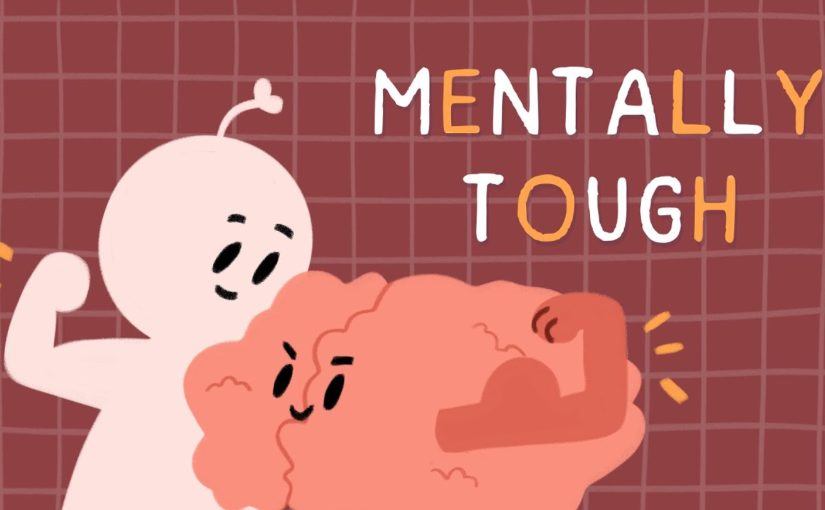

 Instead, the sheer redundancy of such a declaration
exposes their total unfamiliarity with the medical consensus. Since 1980, three editions of the Diagnostic
and Statistical Manual of Mental Disorders have included some kind of diagnosis related
to being trans, under names like transsexualism, gender identity disorder, or gender dysphoria. “What the hell is the diagnostic manual of
whatever?”, my bewildered atheist YouTube commenters might ask. Oh, it’s just a little book by the American
Psychiatric Association. It’s generally considered authoritative by
doctors, researchers, insurance companies, and other delusional folks like that. So, let’s say you’ve been diagnosed with gender
dysphoria. What happens now that you’ve been diagnosed
with this “mental illness”, as my friends in the comments put it? Well, I already know what happens, because
I’ve been diagnosed with this! Spoiler alert: I transitioned. And this wasn’t some original idea of mine
that I had to convince anyone to go along with. There are millions of trans people around
the world – it’s so common that there’s an established treatment protocol for us. It’s called the Standards of Care, published
by the World Professional Association for Transgender Health. Here’s what it has to say about our condition:
“Some people experience gender dysphoria at such a level that the distress meets the criteria
for a formal diagnosis that might be classified as a mental disorder. Such a diagnosis is not a license for stigmatization
or the deprivation of civil and human rights. … Thus, transsexual, transgender, and gender-nonconforming
individuals are not inherently disordered. Rather, the distress of gender dysphoria,
when present, is the concern that might be diagnosable and for which various treatment
options are available.” “Stigmatization” – how about that. Maybe it’s not such a good idea to spout off
about how we must be “delusional”? I assume that all the decent people out there
already understand this, but some of you need it spelled out. And what about those various treatment options? Let’s take a look at section VIII: “Medical
Necessity of Hormone Therapy – Feminizing/masculinizing hormone therapy – the administration of exogenous
endocrine agents to induce feminizing or masculinizing changes – is a medically necessary intervention
for many transsexual, transgender, and gender nonconforming individuals with gender dysphoria.” Section XI: “Sex Reassignment Surgery
Is Effective and Medically Necessary – … While many transsexual, transgender, and gender-nonconforming
individuals find comfort with their gender identity, role, and expression without surgery,
for many others, surgery is essential and medically necessary to alleviate their gender dysphoria. For the latter group, relief from gender dysphoria
cannot be achieved without modification of their primary and/or secondary sex characteristics
to establish greater congruence with their gender identity. … Follow-up studies have shown an undeniable
beneficial effect of sex reassignment surgery on postoperative outcomes such as subjective
well-being, cosmesis, and sexual function.” “A medically necessary intervention”. “Effective and medically necessary”. “An undeniable beneficial effect”. And now you know how this particular “mental
illness” is treated. By the way, that’s from version 7 of the Standards
of Care. Six editions came before it,
dating back to 1979. This is not experimental – it’s an everyday
medical treatment. So I don’t know what these people expect
from me when they start yelling about how I’m “mentally ill”. I already saw a therapist about this. And then they referred me to a gynecologist. And pretty soon they’ll refer me to some surgeons. On the one hand, there’s the constellation
of medical professionals who are working with me on this little upgrade and the hundreds
more who’ve worked to develop protocols for this over several decades. On the other hand, there’s FluffyFeralMarmot,
an esteemed YouTube commenter. Tell me again who I should be taking medical
advice from. Transphobes call us mentally ill because they
think it’s an easy way to try and shame us for who we are. The problem is that they didn’t give a moment’s
thought to what would come after that. They didn’t bother spending five minutes learning
about how this is treated, because they were too busy calling us “delusional”. We don’t need medicine to certify who we already
know we are, any more than cis people do – but if you’re going to bring science into this,
you should make sure the science says what you think it does. Again and again, I see this pattern being
repeated by atheists who think they’re equipped to debate trans issues. They assume that science and evidence support
their position, when this most often supports the exact opposite of their position. I’ve seen atheists argue that trans women
shouldn’t be allowed in women’s restrooms, public facilities, or other spaces, because
we’re supposedly going to rape everyone. After all, nothing says “rapist” like testosterone
blockers, suppressed libido, genital atrophy, and erectile dysfunction. In reality, a majority of trans people have
been harassed just for trying to use public restrooms. Have a majority of cis people been harassed
by trans people in restrooms? I haven’t seen any studies suggesting that
this is the case. Do you know of any? 55% of trans people in homeless shelters or
domestic violence shelters have been harassed while residing there. Have 55% of cis people been harassed by trans
women in shelters? I’m not sure if there are any studies on that
either, but feel free to find them, if you can. I’ve seen atheists argue that it’s unfair
for trans women to be allowed to compete as women in professional sports, or that this
gives them a competitive advantage. The Association of Boxing Commissions,
the NCAA, USA Track & Field, the UK Football Association, and the International Olympic
Committee all allow trans people to compete as their declared gender after medically transitioning. The International Olympic Committee
has to ensure that no one has an unfair advantage – but have they consulted that dude on Facebook
who won’t shut up about trans women’s “bone structure”? And in the midst of all this, it’s practically
a cliché for them to say “It’s 8th-grade biology!” whenever they’re enlightening us with yet
another tautology about chromosomes. I guess the American Psychiatric Association
just needs to go back to middle school, right? You’d think that these science enthusiasts
would realize that early education isn’t a core of foundational truths upon which all
later knowledge is built. It’s a rough approximation designed to be
understandable to grade schoolers, and it becomes progressively more nuanced as students
advance. Instead, they’re doing the equivalent
of citing “4th-grade science” to claim that plasma isn’t real, the sun is a myth, and
who are fluorescent bulbs trying to fool, anyway? I’m glad that the surgeon who’s
going to cut my balls off decided to stay in school after junior high. So, why would people who engage in this transparent
nonsense claim that they have science behind them? They don’t exhibit any honest interest in
the process of science and its actual findings about reality. They only seem to have a selective interest
in the idea of something concrete that would back up their preconceived beliefs. If I didn’t know these people were atheists,
I don’t think I would have been able to tell. What else do you call it when someone knows
nothing about science and thinks they can blather on and on about it anyway? What do you call it when someone refuses to
change their beliefs when faced with evidence? What do you call it when they try to tell
us there’s some nonexistent “controversy” to be debated? What do you call it when they think their
intuition and baseless conjecture are more reliable than any research? And what do you call it when they don’t even
care that this lack of acceptance makes life so much worse for trans people? I sure wouldn’t call that a secular value. How is believing I’m a woman any different
from believing in God? Really? Here’s a question: How is believing that transitioning
is “mutilation” any different from believing that vaccines cause brain damage? How is believing that trans people have an
unfair advantage in sports any different from believing the earth is 6,000 years old? How is believing in an epidemic of transgender
rapists any different from believing in “irreducible complexity”? And how is believing that trans people are
“deluded” any different from believing that atheists are just angry at God? Sorry, but you’re not Neil deGrasse Tyson
giving a science lesson to middle America. You’re Ken Ham telling an audience of faithfully
ignorant sycophants how Adam and Eve rode around on a T. rex. Science observation and reality should
matter to everyone, and I hope they matter to you. But if you’re leaving out the science, the
observation, and the reality, you suck at being a skeptic.
Instead, the sheer redundancy of such a declaration
exposes their total unfamiliarity with the medical consensus. Since 1980, three editions of the Diagnostic
and Statistical Manual of Mental Disorders have included some kind of diagnosis related
to being trans, under names like transsexualism, gender identity disorder, or gender dysphoria. “What the hell is the diagnostic manual of
whatever?”, my bewildered atheist YouTube commenters might ask. Oh, it’s just a little book by the American
Psychiatric Association. It’s generally considered authoritative by
doctors, researchers, insurance companies, and other delusional folks like that. So, let’s say you’ve been diagnosed with gender
dysphoria. What happens now that you’ve been diagnosed
with this “mental illness”, as my friends in the comments put it? Well, I already know what happens, because
I’ve been diagnosed with this! Spoiler alert: I transitioned. And this wasn’t some original idea of mine
that I had to convince anyone to go along with. There are millions of trans people around
the world – it’s so common that there’s an established treatment protocol for us. It’s called the Standards of Care, published
by the World Professional Association for Transgender Health. Here’s what it has to say about our condition:
“Some people experience gender dysphoria at such a level that the distress meets the criteria
for a formal diagnosis that might be classified as a mental disorder. Such a diagnosis is not a license for stigmatization
or the deprivation of civil and human rights. … Thus, transsexual, transgender, and gender-nonconforming
individuals are not inherently disordered. Rather, the distress of gender dysphoria,
when present, is the concern that might be diagnosable and for which various treatment
options are available.” “Stigmatization” – how about that. Maybe it’s not such a good idea to spout off
about how we must be “delusional”? I assume that all the decent people out there
already understand this, but some of you need it spelled out. And what about those various treatment options? Let’s take a look at section VIII: “Medical
Necessity of Hormone Therapy – Feminizing/masculinizing hormone therapy – the administration of exogenous
endocrine agents to induce feminizing or masculinizing changes – is a medically necessary intervention
for many transsexual, transgender, and gender nonconforming individuals with gender dysphoria.” Section XI: “Sex Reassignment Surgery
Is Effective and Medically Necessary – … While many transsexual, transgender, and gender-nonconforming
individuals find comfort with their gender identity, role, and expression without surgery,
for many others, surgery is essential and medically necessary to alleviate their gender dysphoria. For the latter group, relief from gender dysphoria
cannot be achieved without modification of their primary and/or secondary sex characteristics
to establish greater congruence with their gender identity. … Follow-up studies have shown an undeniable
beneficial effect of sex reassignment surgery on postoperative outcomes such as subjective
well-being, cosmesis, and sexual function.” “A medically necessary intervention”. “Effective and medically necessary”. “An undeniable beneficial effect”. And now you know how this particular “mental
illness” is treated. By the way, that’s from version 7 of the Standards
of Care. Six editions came before it,
dating back to 1979. This is not experimental – it’s an everyday
medical treatment. So I don’t know what these people expect
from me when they start yelling about how I’m “mentally ill”. I already saw a therapist about this. And then they referred me to a gynecologist. And pretty soon they’ll refer me to some surgeons. On the one hand, there’s the constellation
of medical professionals who are working with me on this little upgrade and the hundreds
more who’ve worked to develop protocols for this over several decades. On the other hand, there’s FluffyFeralMarmot,
an esteemed YouTube commenter. Tell me again who I should be taking medical
advice from. Transphobes call us mentally ill because they
think it’s an easy way to try and shame us for who we are. The problem is that they didn’t give a moment’s
thought to what would come after that. They didn’t bother spending five minutes learning
about how this is treated, because they were too busy calling us “delusional”. We don’t need medicine to certify who we already
know we are, any more than cis people do – but if you’re going to bring science into this,
you should make sure the science says what you think it does. Again and again, I see this pattern being
repeated by atheists who think they’re equipped to debate trans issues. They assume that science and evidence support
their position, when this most often supports the exact opposite of their position. I’ve seen atheists argue that trans women
shouldn’t be allowed in women’s restrooms, public facilities, or other spaces, because
we’re supposedly going to rape everyone. After all, nothing says “rapist” like testosterone
blockers, suppressed libido, genital atrophy, and erectile dysfunction. In reality, a majority of trans people have
been harassed just for trying to use public restrooms. Have a majority of cis people been harassed
by trans people in restrooms? I haven’t seen any studies suggesting that
this is the case. Do you know of any? 55% of trans people in homeless shelters or
domestic violence shelters have been harassed while residing there. Have 55% of cis people been harassed by trans
women in shelters? I’m not sure if there are any studies on that
either, but feel free to find them, if you can. I’ve seen atheists argue that it’s unfair
for trans women to be allowed to compete as women in professional sports, or that this
gives them a competitive advantage. The Association of Boxing Commissions,
the NCAA, USA Track & Field, the UK Football Association, and the International Olympic
Committee all allow trans people to compete as their declared gender after medically transitioning. The International Olympic Committee
has to ensure that no one has an unfair advantage – but have they consulted that dude on Facebook
who won’t shut up about trans women’s “bone structure”? And in the midst of all this, it’s practically
a cliché for them to say “It’s 8th-grade biology!” whenever they’re enlightening us with yet
another tautology about chromosomes. I guess the American Psychiatric Association
just needs to go back to middle school, right? You’d think that these science enthusiasts
would realize that early education isn’t a core of foundational truths upon which all
later knowledge is built. It’s a rough approximation designed to be
understandable to grade schoolers, and it becomes progressively more nuanced as students
advance. Instead, they’re doing the equivalent
of citing “4th-grade science” to claim that plasma isn’t real, the sun is a myth, and
who are fluorescent bulbs trying to fool, anyway? I’m glad that the surgeon who’s
going to cut my balls off decided to stay in school after junior high. So, why would people who engage in this transparent
nonsense claim that they have science behind them? They don’t exhibit any honest interest in
the process of science and its actual findings about reality. They only seem to have a selective interest
in the idea of something concrete that would back up their preconceived beliefs. If I didn’t know these people were atheists,
I don’t think I would have been able to tell. What else do you call it when someone knows
nothing about science and thinks they can blather on and on about it anyway? What do you call it when someone refuses to
change their beliefs when faced with evidence? What do you call it when they try to tell
us there’s some nonexistent “controversy” to be debated? What do you call it when they think their
intuition and baseless conjecture are more reliable than any research? And what do you call it when they don’t even
care that this lack of acceptance makes life so much worse for trans people? I sure wouldn’t call that a secular value. How is believing I’m a woman any different
from believing in God? Really? Here’s a question: How is believing that transitioning
is “mutilation” any different from believing that vaccines cause brain damage? How is believing that trans people have an
unfair advantage in sports any different from believing the earth is 6,000 years old? How is believing in an epidemic of transgender
rapists any different from believing in “irreducible complexity”? And how is believing that trans people are
“deluded” any different from believing that atheists are just angry at God? Sorry, but you’re not Neil deGrasse Tyson
giving a science lesson to middle America. You’re Ken Ham telling an audience of faithfully
ignorant sycophants how Adam and Eve rode around on a T. rex. Science observation and reality should
matter to everyone, and I hope they matter to you. But if you’re leaving out the science, the
observation, and the reality, you suck at being a skeptic.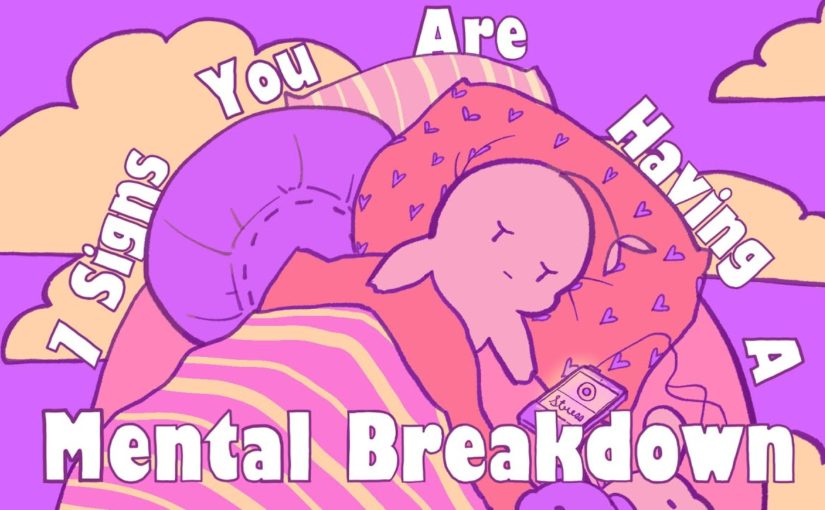
 Because of a sudden loss of motivation, If you find yourself having sudden unhealthy lifestyle changes, You might want to check on your mental well being Five paranoia. Are you constantly worried that people are going to hurt you? Paranoia is a thought process that causes you to have irrational suspicion or mistrust of others, As paranoia is also known for having constant anxiety, and related beliefs. Developing symptoms of paranoia may indicate that you are under severe stress, which can lead to a mental breakdown. Six slowing down of speech Have you responded with I don’t know, or I just don’t feel right When asked about your feelings? One of the earliest signs of a mental breakdown is changes in speech patterns Which can come in the form of hesitation or the slowness of speech. This could be due to the emergence of intrusive thoughts or strong feelings. You may find it difficult to express seven panic attacks. Mental breakdowns are periods of intense mental distress associated with anxiety and depression. Experiencing panic attacks may serve as a critical warning or precursor to having a mental breakdown. Do you relate to any of these signs? Let us know in the comments below Remember you, ‘re, not alone, and if you can relate to this, the video doesn’t afraid to reach out to a professional or talk to someone. You trust if If you find this video helpful be sure to like and share this video With those who might benefit from it subscribe to psych to go for more psychology videos The references, and studies used in this video. Are added in the description below Thanks for watching and we’ll see you in the next video.
Because of a sudden loss of motivation, If you find yourself having sudden unhealthy lifestyle changes, You might want to check on your mental well being Five paranoia. Are you constantly worried that people are going to hurt you? Paranoia is a thought process that causes you to have irrational suspicion or mistrust of others, As paranoia is also known for having constant anxiety, and related beliefs. Developing symptoms of paranoia may indicate that you are under severe stress, which can lead to a mental breakdown. Six slowing down of speech Have you responded with I don’t know, or I just don’t feel right When asked about your feelings? One of the earliest signs of a mental breakdown is changes in speech patterns Which can come in the form of hesitation or the slowness of speech. This could be due to the emergence of intrusive thoughts or strong feelings. You may find it difficult to express seven panic attacks. Mental breakdowns are periods of intense mental distress associated with anxiety and depression. Experiencing panic attacks may serve as a critical warning or precursor to having a mental breakdown. Do you relate to any of these signs? Let us know in the comments below Remember you, ‘re, not alone, and if you can relate to this, the video doesn’t afraid to reach out to a professional or talk to someone. You trust if If you find this video helpful be sure to like and share this video With those who might benefit from it subscribe to psych to go for more psychology videos The references, and studies used in this video. Are added in the description below Thanks for watching and we’ll see you in the next video.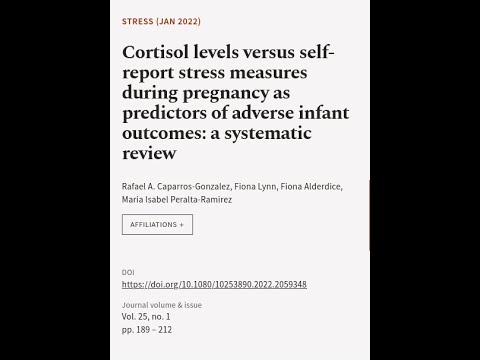
 Methodological limitations need to be addressed in future studies to better understand the relationship between cortisol and self-reported stress and how they are related to adverse infant outcomes. This article was authored by Rafael A. Caparros-Gonzalez, Fiona Lynn, Fiona Alderdice, and others.
Methodological limitations need to be addressed in future studies to better understand the relationship between cortisol and self-reported stress and how they are related to adverse infant outcomes. This article was authored by Rafael A. Caparros-Gonzalez, Fiona Lynn, Fiona Alderdice, and others.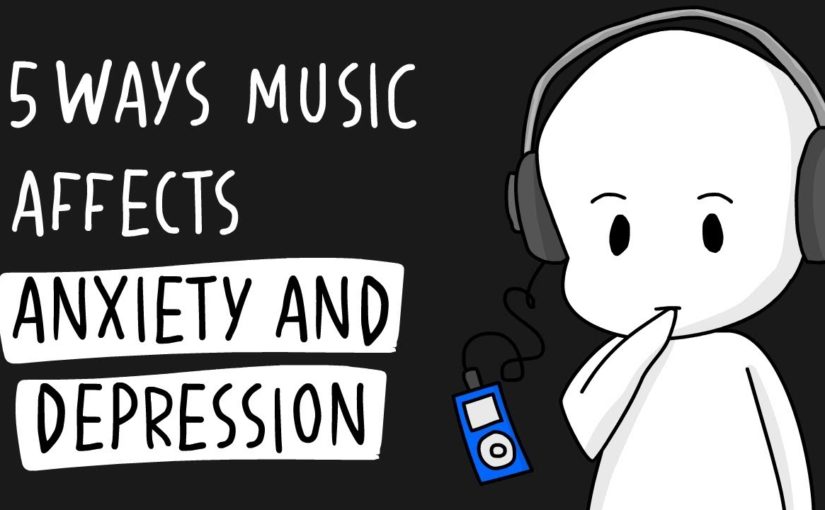
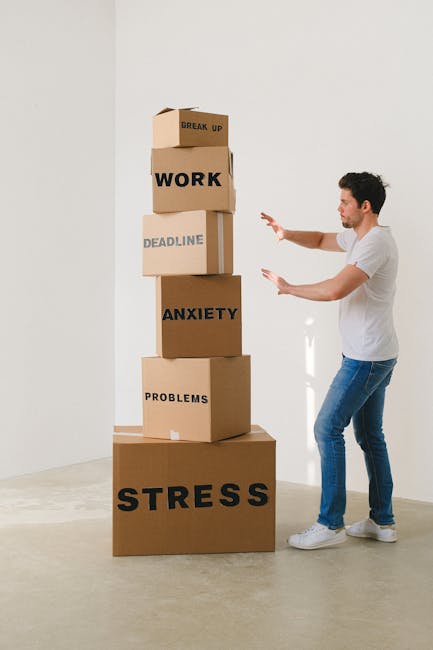 It might also be easier to talk about feelings through lyrics and songs than in other ways. Also reading lyrics. That means a lot to you can help. You feel better if you analyze, why those lyrics mean a lot to you, so we’ve seen how music can affect anxiety, but does it also have an effect on depression? Listening to music can change your mood, so it’s, probably not surprising. It can influence people with depression, Jun, Cellini states that music helps you to express emotions and can help encourage you to let go of suppressed ones. Positive upbeat, music can help lift your mood while slow and sad music might increase your depression. Also listening to music associated with bad memories may make your symptoms worse. This depends on the individual, of course. Sometimes listening to sad lyrics can help an individual feel better, as they may feel less alone. Like with anxiety writing, music can also affect depression. Writing down your feelings can be very helpful in fighting depression. So writing poems or lyrics about your feelings can help reduce depressive symptoms. Writing out the feelings can be a form of release and has been known to prevent suicide and self-harm. We hope you enjoyed this video. If you did please remember to like and share this video and subscribe to our channel for more from our magazine, you can buy them from Psyche to Godot shop. All pledges to our Patreon at
It might also be easier to talk about feelings through lyrics and songs than in other ways. Also reading lyrics. That means a lot to you can help. You feel better if you analyze, why those lyrics mean a lot to you, so we’ve seen how music can affect anxiety, but does it also have an effect on depression? Listening to music can change your mood, so it’s, probably not surprising. It can influence people with depression, Jun, Cellini states that music helps you to express emotions and can help encourage you to let go of suppressed ones. Positive upbeat, music can help lift your mood while slow and sad music might increase your depression. Also listening to music associated with bad memories may make your symptoms worse. This depends on the individual, of course. Sometimes listening to sad lyrics can help an individual feel better, as they may feel less alone. Like with anxiety writing, music can also affect depression. Writing down your feelings can be very helpful in fighting depression. So writing poems or lyrics about your feelings can help reduce depressive symptoms. Writing out the feelings can be a form of release and has been known to prevent suicide and self-harm. We hope you enjoyed this video. If you did please remember to like and share this video and subscribe to our channel for more from our magazine, you can buy them from Psyche to Godot shop. All pledges to our Patreon at 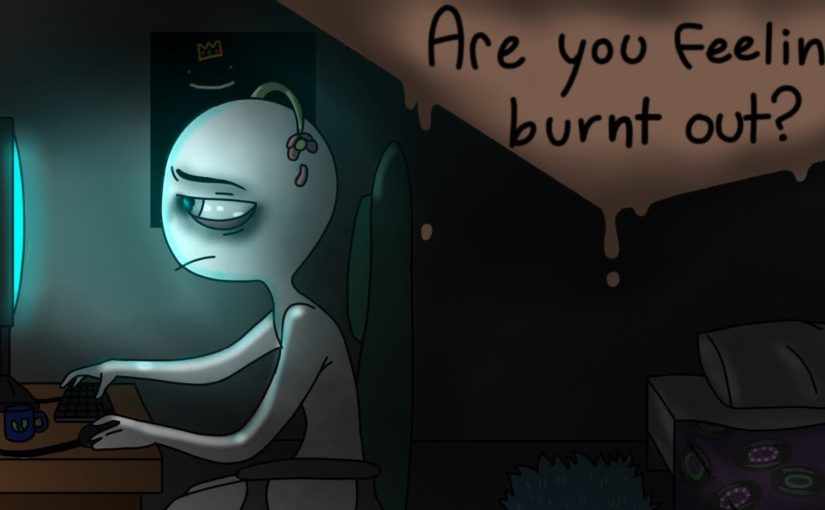
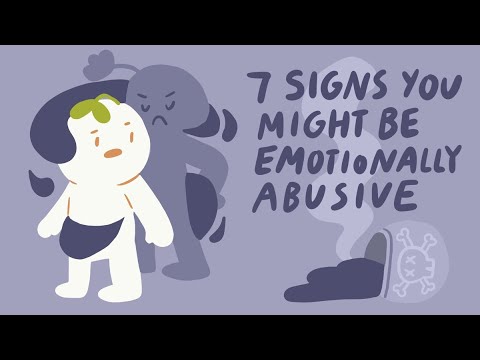
 Number six, you use your emotions to get people to do what you want. Have you intentionally
made someone feel guilty just to get your way? Expressing your emotions can be great for your mental health. Appropriate self-expression facilitates open communication and prevents many resentments. However, unleashing your
emotions becomes destructive when you use it to
manipulate another person. This may include impulsive
shouting or screaming, using threats or ultimatums, blaming them for fights you started, or using information they’ve told you in confidence against them to maintain control and power. Number seven, you use silence as a weapon. Are you the type who deals with conflict by shutting down and running in the other direction? Have you ever used the
silent treatment on others to get what you want? Emotional withholding, a form of emotional abuse that involves using affection,
validation, love, and praise, against someone is a
form of emotional abuse that includes what you might know as the silent treatment. Although it’s normal for any relationship to go through periods of silence, it may become abusive
when you start to use it as a way to punish,
control, or manipulate. Withholding affection or positive emotion through silent treatment is a toxic way to gain the upper hand in any relationship. This also includes talking to everyone about the issue, except the other person involved or wanting the other person to feel bad or guilty. Do you relate to any of
the signs mentioned here? If so, what do you plan to do next? Tell us in the comments below. If you find this video insightful, please like and share it with others who may benefit from it. Don’t forget to subscribe to Psych2Go and hit the notification bell icon for more psychology content. All the references used are also added in the
description box below. Thank you for watching and we’ll see you in our next video..
Number six, you use your emotions to get people to do what you want. Have you intentionally
made someone feel guilty just to get your way? Expressing your emotions can be great for your mental health. Appropriate self-expression facilitates open communication and prevents many resentments. However, unleashing your
emotions becomes destructive when you use it to
manipulate another person. This may include impulsive
shouting or screaming, using threats or ultimatums, blaming them for fights you started, or using information they’ve told you in confidence against them to maintain control and power. Number seven, you use silence as a weapon. Are you the type who deals with conflict by shutting down and running in the other direction? Have you ever used the
silent treatment on others to get what you want? Emotional withholding, a form of emotional abuse that involves using affection,
validation, love, and praise, against someone is a
form of emotional abuse that includes what you might know as the silent treatment. Although it’s normal for any relationship to go through periods of silence, it may become abusive
when you start to use it as a way to punish,
control, or manipulate. Withholding affection or positive emotion through silent treatment is a toxic way to gain the upper hand in any relationship. This also includes talking to everyone about the issue, except the other person involved or wanting the other person to feel bad or guilty. Do you relate to any of
the signs mentioned here? If so, what do you plan to do next? Tell us in the comments below. If you find this video insightful, please like and share it with others who may benefit from it. Don’t forget to subscribe to Psych2Go and hit the notification bell icon for more psychology content. All the references used are also added in the
description box below. Thank you for watching and we’ll see you in our next video..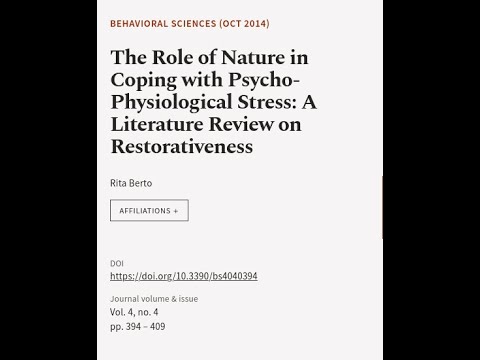


 Try yoga yoga’s physiological effects may explain why those who practice it appear less stressed if you’ve ever noticed this yoga relies on breathing to synchronize the body and mind your body may start to feel more at ease as a result many of the effects of yoga seem to be centered on lowering cortisol and blood pressure which can also lower the effect stress has on the body 5. eat a balanced diet is another important factor in Stress Management every area of your health including your mental health is impacted by your diet Healthy nutrition is important according to Vagopian you will feel worse if you consume a lot of fast food or food that has a lot of processed flour or sugar if you eat fewer meals and drinks that have undergone extensive processing and more Whole Foods like fruits vegetable legumes fish nuts and seeds your body will be well fed consequently you can become more resistant to stress as a result 6. Connect with loved ones the social support of friends and family can help you get through tough times and manage stress if you are stressed out talk to your friends and relatives according to study people who receive less social support exhibit greater overt signs of stress your social support system’s capacity affects your overall Mental Health if you’re feeling lonely and don’t have friends or family to turn to social support groups could be helpful consider getting involved with a club a sports team or a cause that is important to you by volunteering seven spend time in nature more time spent outside could help lower stress Studies have shown that being in nature and spending time in green areas like parks and forests are excellent strategies to manage stress spending as little as 10 minutes in a natural environment May assist enhanced psychological and physiological markers of mental well-being such as perceived stress and happiness although hiking and camping are excellent possibilities some people don’t like them or don’t have access to them even if you live in an urban area you can look for green areas like local parks arboretums and botanical gardens even if you reside in a city we have discussed seven tips to reduce your stress follow these and provide your feedback in the comments section do not forget to subscribe to the channel for more upcoming videos
Try yoga yoga’s physiological effects may explain why those who practice it appear less stressed if you’ve ever noticed this yoga relies on breathing to synchronize the body and mind your body may start to feel more at ease as a result many of the effects of yoga seem to be centered on lowering cortisol and blood pressure which can also lower the effect stress has on the body 5. eat a balanced diet is another important factor in Stress Management every area of your health including your mental health is impacted by your diet Healthy nutrition is important according to Vagopian you will feel worse if you consume a lot of fast food or food that has a lot of processed flour or sugar if you eat fewer meals and drinks that have undergone extensive processing and more Whole Foods like fruits vegetable legumes fish nuts and seeds your body will be well fed consequently you can become more resistant to stress as a result 6. Connect with loved ones the social support of friends and family can help you get through tough times and manage stress if you are stressed out talk to your friends and relatives according to study people who receive less social support exhibit greater overt signs of stress your social support system’s capacity affects your overall Mental Health if you’re feeling lonely and don’t have friends or family to turn to social support groups could be helpful consider getting involved with a club a sports team or a cause that is important to you by volunteering seven spend time in nature more time spent outside could help lower stress Studies have shown that being in nature and spending time in green areas like parks and forests are excellent strategies to manage stress spending as little as 10 minutes in a natural environment May assist enhanced psychological and physiological markers of mental well-being such as perceived stress and happiness although hiking and camping are excellent possibilities some people don’t like them or don’t have access to them even if you live in an urban area you can look for green areas like local parks arboretums and botanical gardens even if you reside in a city we have discussed seven tips to reduce your stress follow these and provide your feedback in the comments section do not forget to subscribe to the channel for more upcoming videos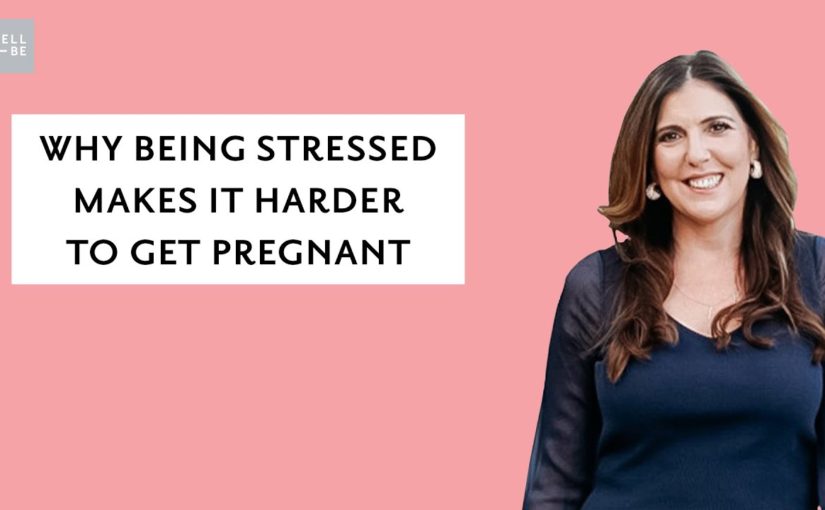
 Cortisol is made from progesterone, downstream from progesterone. Hence, when
we have to make cortisol, progesterone goes down. With that all the other hormones that are
downstream from there including estrogen DHEA and testosterone are reproductive hormones or
hormones of sexual desire or hormones of fertility or hormones, you know, of pregnancy. So all of those get depleted to sacrifice to make this life-saving hormone cortisol. But when cortisol is going on for
too long you get this significant depletion and in my case it becomes infertility. So I always say and
teach this and I’ve taught residents and other physicians worldwide but the
eyes don’t see what the mind doesn’t know.
Cortisol is made from progesterone, downstream from progesterone. Hence, when
we have to make cortisol, progesterone goes down. With that all the other hormones that are
downstream from there including estrogen DHEA and testosterone are reproductive hormones or
hormones of sexual desire or hormones of fertility or hormones, you know, of pregnancy. So all of those get depleted to sacrifice to make this life-saving hormone cortisol. But when cortisol is going on for
too long you get this significant depletion and in my case it becomes infertility. So I always say and
teach this and I’ve taught residents and other physicians worldwide but the
eyes don’t see what the mind doesn’t know.